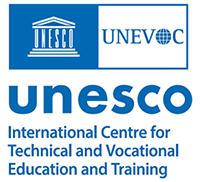
The UNESCO-UNEVOC International Centre: Who We Are | What We Do | Working With Us | Get in Touch
The UNEVOC Network: Learn About the Network | UNEVOC Network Directory
For Members: UNEVOC Centre Dashboard
Thematic Areas: Inclusion and Youth | Digital Transformation | Private Sector Engagement | SDGs and Greening TVET
Our Key Programmes & Projects: BILT: Bridging Innovation and Learning in TVET | Building TVET resilience | TVET Leadership Programme | WYSD: World Youth Skills Day
Past Activities: COVID-19 response | i-hubs project | TVET Global Forums | Virtual Conferences | YEM Knowledge Portal
Our Services & Resources: Publications | TVET Forum | TVET Country Profiles | TVETipedia Glossary | Innovative and Promising Practices | Toolkits for TVET Providers | Entrepreneurial Learning Guide
Events: Major TVET Events | UNEVOC Network News
VR is an emerging technology using computer-generated graphics to produce a realistic 3D environment for multiple sensory experiences (Burdea & Coiffet, 2006) including a tracking system (input) and a display system (output) (Kulpa et al., 2015). The user is fully immersed in a computer-generated world. Their viewpoint changes according to head movements (Slater et al., 2009; Slater & Sanchez-Vives, 2016). There are several elements of VR experiences, distinguished roughly by the degree to which the user’s sensory perception is coopted.
 Source:
Source:An artificial world that consists of images and sounds created by a computer and that is affected by the actions of a person who is experiencing it.
The term Virtual Reality is used to characterize an interactive three-dimensional computer-generated environment or a 3D computer simulation which an individual can explore and experience. This provides an immersive experience for an individual who can interact with and manipulate the elements of the simulation, just like the real world. VR has immense potential to make learning more engaging, effective and to take education beyond the traditional classroom experience. Moreover, with devices such as Mobile Virtual Reality Headsets, the VR experience is virtually accessible to anyone from anywhere at any time.
Virtual Reality in education involves the creation of a simulated experience that can be similar to the real world.